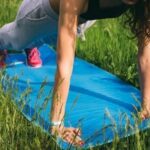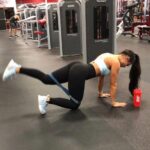The thrill of hitting the slopes and enjoying the adrenaline rush of skiing is a popular winter pastime for many. However, to fully enjoy this winter sport, it’s important to prepare your body physically with a proper fitness routine for skiing. Before diving into a fitness routine for skiing, understanding the physical demands of the sport is essential. This includes the muscle groups used, cardiovascular endurance required, and flexibility needed for optimal performance on the slopes.
To improve overall ski performance, strength training is crucial. Specific exercises that target the legs, core, and upper body such as squats, lunges, deadlifts, rows, and lat pull-downs are essential. Furthermore, cardiovascular conditioning is necessary to build stamina and endurance for skiing. Activities like cycling, running, and interval training can help prepare skiers for long runs and high altitudes.
In addition to strength and cardio training, flexibility and mobility are also vital for navigating turns and maintaining balance on the slopes. Incorporating stretching exercises and yoga into a fitness routine can enhance flexibility while mobility exercises can prevent injuries during skiing. Finally, balance and coordination drills such as single-leg exercises and stability ball exercises can greatly improve skiing performance.
Understanding the Physical Demands of Skiing
Skiing is an exhilarating winter sport that requires a combination of strength, cardiovascular endurance, flexibility, balance, and coordination. Before diving into a fitness routine for skiing, it’s essential to understand the physical demands of the sport in order to properly prepare the body for optimal performance on the slopes.
One of the key physical demands of skiing is the engagement of various muscle groups throughout the body. The lower body, including the quadriceps, hamstrings, glutes, and calves, plays a crucial role in propelling skiers down the slopes and maintaining stability during turns and jumps. Additionally, the core muscles are heavily engaged in skiing to support posture and balance. Upper body strength is also important for maintaining control while using ski poles and maneuvering through challenging terrains.
In addition to muscular engagement, skiing requires a high level of cardiovascular endurance. Skiers often face long runs down steep slopes and elevation changes which demand stamina and aerobic capacity. Building cardiovascular endurance through specific exercises is crucial for maintaining energy levels throughout a day on the slopes.
Finally, flexibility is another essential component for optimal performance in skiing. Skiers need to be able to move fluidly through various positions while maintaining stability on their skis, thus requiring good joint mobility and muscular flexibility in key areas such as hips, knees, ankles, and spine.
Understanding these physical demands can help individuals develop a well-rounded fitness routine for skiing that targets all areas necessary for peak performance on the slopes. By incorporating strength training exercises targeting specific muscle groups used in skiing along with cardio workouts to improve endurance and flexibility routines to enhance mobility, skiers can ensure they are physically prepared for a successful ski season.
Strength Training for Skiing
Leg Strength Exercises
To excel in skiing, building strong leg muscles is crucial. Exercises such as squats, lunges, and deadlifts are effective in targeting the quadriceps, hamstrings, glutes, and calf muscles. Incorporating plyometric exercises like box jumps and skater hops can also help improve explosive power needed for skiing.
Core Strengthening Workouts
A strong core is vital for maintaining stability and balance while skiing. Planks, Russian twists, and mountain climbers are excellent exercises to strengthen the core muscles. Additionally, integrating rotational movements like woodchoppers can enhance core strength for better control on the slopes.
Upper Body Conditioning
Even though skiing predominantly relies on lower body strength, having a strong upper body can significantly impact overall performance. Rows, lat pull-downs, push-ups, and overhead press exercises are beneficial in improving upper body strength and providing stability during skiing maneuvers.
Incorporating these strength training exercises into your fitness routine for skiing will not only enhance performance but also reduce the risk of potential injuries on the slopes. An efficient combination of leg, core, and upper body workouts will contribute to a well-rounded fitness routine that prepares the body for the physical demands of skiing.
Cardiovascular Conditioning
Cardiovascular endurance is a crucial component of any fitness routine for skiing. Whether you are hitting the slopes for a leisurely run or tackling more advanced terrain, having the stamina and endurance to handle long runs and high altitudes is essential. To build cardiovascular endurance for skiing, incorporating specific cardio exercises into your fitness routine is key. Here are some effective cardio exercises to help improve your stamina and endurance for skiing:
- Cycling: Cycling is an excellent way to improve cardiovascular fitness as it works the lower body muscles while also providing an aerobic workout. Whether you prefer cycling outdoors or using a stationary bike, incorporating regular cycling sessions into your fitness routine can help build the stamina needed for skiing.
- Running: Running is another effective cardio exercise that can enhance your cardiovascular endurance for skiing. Focus on including both steady-state runs and interval training in your running routine to build the necessary stamina and endurance required for tackling long runs on the slopes.
- Interval Training: Interval training involves alternating between periods of intense activity and rest, making it an ideal form of exercise for improving cardiovascular fitness. Incorporating interval training sessions, such as sprinting intervals or hill sprints, can significantly boost your overall cardiovascular endurance, preparing you for the demands of skiing.
By including these cardio exercises in your fitness routine for skiing, you can enhance your cardiovascular endurance, allowing you to tackle longer runs and navigate high altitudes with greater ease and confidence.
In addition to these cardio exercises, it’s important to also incorporate strength training, flexibility, mobility, balance drills, and injury prevention strategies into your overall fitness routine for skiing. By taking a comprehensive approach to fitness preparation, you can optimize your performance on the slopes while reducing the risk of common skiing-related injuries.
Flexibility and Mobility
To fully enjoy the thrill and excitement of skiing, it’s crucial to prepare your body physically with a proper fitness routine that includes flexibility and mobility exercises. Skiing demands a high level of flexibility and joint mobility to navigate turns and maintain balance on the slopes. In order to improve flexibility, reduce the risk of injury, and enhance overall skiing performance, it’s essential to incorporate stretching, yoga, and mobility exercises into your fitness routine.
Here are some important flexibility and mobility exercises for skiers:
- Yoga: Engaging in a regular yoga practice can greatly improve flexibility, balance, and core strength. Poses such as downward dog, pigeon pose, and warrior sequences can help open up the hips, stretch the hamstrings, calves, and lower back, ultimately improving your range of motion while skiing.
- Dynamic Stretching: Incorporating dynamic stretches into your pre-ski warm-up routine can help improve joint mobility and increase blood flow to your muscles. Leg swings, arm circles, torso rotations are examples of dynamic stretches that prepare your body for the physical demands of skiing.
- Mobility Exercises: Targeted mobility exercises such as hip openers, ankle mobilization drills, and shoulder rotations can help increase joint range of motion and reduce the risk of strains or sprains while tackling challenging terrain on the slopes.
By including these flexibility and mobility exercises in your fitness routine for skiing, you can significantly improve your overall performance on the slopes while reducing the risk of common skiing-related injuries. It’s important to prioritize this aspect of training to ensure a safe and enjoyable experience while embracing the winter sport we love.
Balance and Coordination Drills
Skiing heavily relies on balance and coordination, especially when navigating through varying terrains. In order to enhance skiing performance, specific balance and coordination drills can be incorporated into a fitness routine for skiing. These drills aim to improve proprioception, body awareness, and overall stability on the slopes.
One effective balance and coordination drill for skiing is single-leg exercises. These exercises help to strengthen the stabilizing muscles in the legs and improve balance, which are essential for maintaining control while skiing. Examples of single-leg exercises include single-leg squats, single-leg deadlifts, and single-leg hops. By incorporating these exercises into a fitness routine for skiing, skiers can develop better balance and reduce their risk of falls or injuries on the slopes.
Agility ladder drills are another valuable addition to a fitness routine for skiing. These drills focus on quick footwork, agility, and coordination – all of which are necessary skills for navigating through varying terrains on the slopes. Agility ladder drills can improve a skier’s ability to make quick adjustments in footing and direction while maintaining control at higher speeds. By practicing these drills regularly, skiers can enhance their overall agility and coordination, leading to better performance on the slopes.
Stability ball exercises are also beneficial for enhancing skiing performance. Stability ball exercises challenge core stability and strength, which are crucial for maintaining balance while skiing. Incorporating exercises like stability ball planks, stability ball pike roll-outs, and stability ball knee tucks into a fitness routine for skiing can improve overall core strength and stability – both essential components for successful skiing maneuvers.
Overall, integrating specific balance and coordination drills into a fitness routine for skiing can significantly enhance a skier’s performance on the slopes. By focusing on improving proprioception, body awareness, stability, agility, and core strength through these drills, skiers can better prepare their bodies for the physical demands of the sport.
| Balance & Coordination Drill | Benefits |
|---|---|
| Single-Leg Exercises | Improves leg strength and balance |
| Agility Ladder Drills | Enhances footwork agility and quick adjustments |
| Stability Ball Exercises | Challenges core stability and improves overall body awareness |
Injury Prevention
When engaging in any physical activity, especially one as exhilarating as skiing, it is crucial to consider injury prevention strategies to ensure a safe and enjoyable experience on the slopes. Fortunately, with targeted strength training, flexibility, and mobility exercises, skiers can significantly reduce the risk of common skiing-related injuries.
Targeted Strength Training
To prevent injuries while skiing, it is essential to focus on targeted strength training exercises that enhance the stability and strength of the muscles used during skiing. Strengthening the lower body muscles such as quadriceps, hamstrings, glutes, and hip adductors through exercises like squats, lunges, and deadlifts can help improve overall stability and reduce the risk of knee injuries.
Flexibility and Mobility Exercises
Improving flexibility and joint mobility is key to preventing injuries while skiing. Engaging in regular stretching routines and incorporating yoga sessions into your fitness routine can help increase flexibility in the hips, knees, ankles, and spine-critical for maneuvering turns and maintaining balance on varied terrain. Additionally, mobility exercises focusing on hip flexors, calves, and shoulders can aid in injury prevention by reducing strain on these areas during skiing.
Injury-Specific Prevention Strategies
Understanding common skiing-related injuries such as knee ligament sprains or strains can guide individuals in implementing specific injury prevention measures. For example, incorporating balance exercises like single-leg squats or standing on a balance board can help stabilize knees and ankles to prevent sprains or strains. Additionally, focusing on core stability through exercises like planks or Russian twists can alleviate stress on the lower back during skiing.
By prioritizing targeted strength training for ski-specific muscle groups, incorporating flexibility and mobility exercises into your fitness routine, as well as injury-specific prevention strategies such as balance exercises, skiers can mitigate the risk of common skiing-related injuries. These preventative measures not only contribute to a safer skiing experience but also allow for an improved overall performance on the slopes.
Recovery and Rest
Proper recovery and rest play a crucial role in enhancing ski performance and preventing injuries. Rest days are essential to allow the body to recover from the physical demands of skiing and the fitness routine. It is during these rest days that the body repairs and strengthens muscles, which is vital for overall improvement in ski performance.
In addition to rest days, recovery techniques such as foam rolling and stretching can help alleviate muscle soreness, improve flexibility, and enhance overall mobility. Foam rolling helps release tight muscles and trigger points, while stretching can improve flexibility, reduce the risk of injury, and aid in muscle recovery.
Nutrition also plays a significant role in optimizing ski performance. Consuming a balanced diet rich in carbohydrates, lean proteins, healthy fats, and plenty of fruits and vegetables provides the necessary nutrients for energy production, muscle repair, and overall recovery. Hydration is also critical for maintaining peak performance on the slopes.
Overall, it’s important to view rest, recovery techniques, and nutrition as integral parts of your fitness routine for skiing. By incorporating these elements into your training plan, you can prevent burnout, reduce the risk of injury, and ultimately improve your skiing experience.
| Topic | Description |
|---|---|
| Proper Recovery | Incorporating rest days into ski training routine allows for proper muscle recovery. |
| Recovery Techniques | Foam rolling and stretching help alleviate muscle soreness and improve flexibility. |
| Nutrition | Consuming a balanced diet aids in energy production, muscle repair and overall recovery. |
Conclusion
In conclusion, a well-rounded fitness routine for skiing is vital for anyone looking to hit the slopes and enjoy an optimal skiing experience. Understanding the physical demands of skiing, including the use of specific muscle groups, cardiovascular endurance, flexibility, and balance, is essential in preparing the body for this winter sport.
By incorporating strength training exercises to target key areas such as the legs, core, and upper body, individuals can improve their overall ski performance and reduce the risk of common skiing-related injuries.
Moreover, cardiovascular conditioning through activities like cycling, running, and interval training is crucial for building stamina and endurance needed for long runs on the slopes. Flexibility and mobility exercises such as stretching, yoga, and joint mobility drills play a significant role in preventing injuries while enhancing overall performance. Additionally, focusing on balance and coordination drills will further boost skiing capabilities by improving stability on varying terrains.
Lastly, it’s important to highlight that proper recovery techniques such as foam rolling, stretching, rest days, and good nutrition are just as critical as the physical training itself. Taking care of the body through adequate rest and recovery plays a significant role in injury prevention and sustaining peak ski performance throughout the season.
By prioritizing a comprehensive fitness routine for skiing that addresses all these components, individuals can not only enhance their skiing abilities but also increase their enjoyment of this exhilarating winter sport.
Frequently Asked Questions
How Do I Get in Shape for Skiing?
To get in shape for skiing, it’s important to focus on building strength, flexibility, and cardiovascular endurance. Incorporating exercises like squats, lunges, core work, and cardio activities such as biking or running can help prepare your body for the demands of skiing.
What Gym Exercises Help With Skiing?
Gym exercises that can specifically benefit skiing include squats and lunges to strengthen the legs, core exercises like planks and Russian twists for stability, and deadlifts to improve overall strength. Utilizing resistance bands or balance training can also mimic the movements needed for skiing.
How to Get Fit for Skiing in 4 Weeks?
Getting fit for skiing in 4 weeks requires a focused approach. A combination of strength training, cardio workouts, and flexibility exercises is essential. It’s important to gradually increase intensity over time while also allowing for adequate rest and recovery to prevent injury before hitting the slopes.

Passionate about providing useful information to anyone with an interest in the field of Personal Training, I strive to pass on to our readers quality information and to answer any questions about Personal Trainers, the work they do and how to become one.





